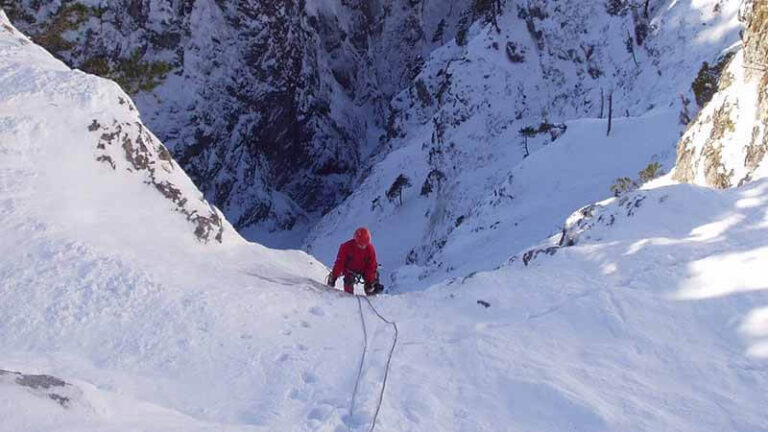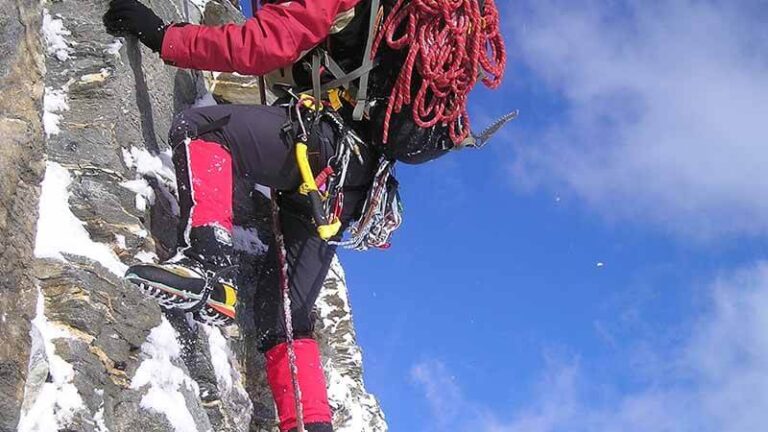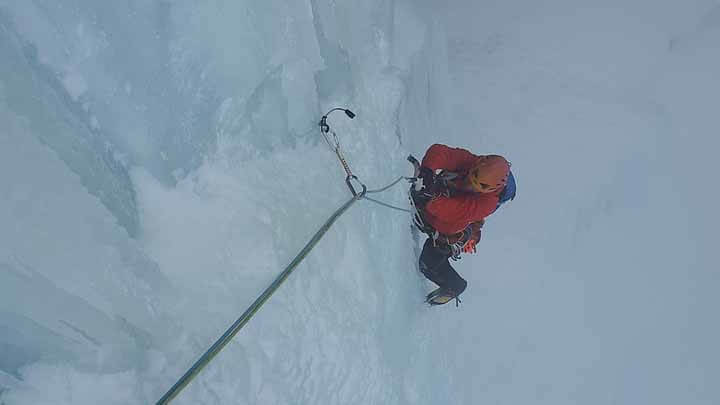What are the Health Benefits of Ice Climbing?
Ice climbing is a sport that involves utilizing specialized equipment such as ice axes, crampons, and ropes to climb up ice formations such as frozen waterfalls or ice-covered rock walls. It is usually done during the winter when waterfalls and other ice structures freeze solid. Ice climbing has grown in popularity as a thrilling and challenging winter activity that combines physical power, technical skill, and mental focus in recent years.
The primary goal of this blog post is to investigate the numerous health benefits of ice climbing. While ice climbing may appear to be a dangerous and risky exercise, it has been discovered to have significant physical, mental, and environmental health advantages. The post’s goal is to urge readers to consider ice climbing as a potential winter activity to improve their general health and well-being by emphasizing these benefits.
Physical Health Benefits
Ice climbing is a strenuous physical sport that needs a great deal of strength, endurance, and coordination. Climbers drag themselves up the ice with their entire body, using several muscle groups and offering a full-body workout. Ice climbing requires regular action of the arms, legs, and core muscles, which can assist develop muscle strength and endurance, as well as general fitness.
Ice climbing, in addition to delivering a full-body workout, can improve cardiovascular health and endurance. Climbing an ice formation demands a significant amount of energy and oxygen, which causes the heart to work harder to circulate blood throughout the body. This can assist to strengthen the heart and enhance cardiovascular health over time. As the body adapts to the physical demands of the sport, regular ice climbing can also aid improve endurance.
Another advantage of ice climbing is that it improves flexibility and balance. Climbing across uneven terrain forces the body to constantly adjust and maintain balance, which can aid in the improvement of coordination and balance. Climbers must be able to move their bodies in a variety of various ways to navigate the ice formations, which can lead to enhanced flexibility. Crampons, or specialist ice climbing shoes with spikes on the bottom, can also aid develop foot and ankle flexibility as well as lower body strength.
Overall, ice climbing is a fantastic approach to increasing physical fitness, cardiovascular health, and coordination. It works for various muscle groups, gives you a full-body workout, and pushes you in new and exciting ways.
Mental Health Benefits
Ice climbing is not only good for your physical health, but it can also help your mental health. Climbing in nature and exerting oneself can bring a sense of tranquility and stress alleviation, as well as a mental break from daily activities. Being outside in the fresh air and surrounded by beautiful landscapes can also assist to improve mood and lower stress levels.
Ice climbing requires a high level of focus and concentration, which can assist increase mental clarity and mindfulness. Climbing requires one to be totally present and concentrated on the activity at hand, with minimal opportunity for distractions. This intensive concentration can assist enhance concentration abilities, and the required mindfulness can help reduce anxiety and improve general mental health.
The sense of satisfaction and confidence that comes from successfully completing a climb is one of the most significant mental health benefits of ice climbing. Ice climbing is a demanding and often daunting sport, but completing difficult climbs can enhance self-confidence and self-esteem significantly. The sense of accomplishment that comes with reaching the summit of a climb can bring motivation and a sense of pride, both of which can promote mental well-being.
Environmental Health Benefits
Spending time outside and participating in physical activities can have several health and well-being benefits. Outdoor activities allow you to receive some fresh air, sunlight, and exercise, all of which can help you improve your physical health, reduce stress, and increase your mood. Outdoor activities can also help reduce the risk of chronic diseases including heart disease, obesity, and diabetes, resulting in an overall improvement in quality of life.
Ice climbing, in particular, can foster a sense of connection with nature, leading to enhanced mental health and stress alleviation. Climbers are surrounded by the natural beauty of their surroundings and must be completely present in order to traverse the ice structures. This connection with nature can aid in mental health, stress reduction, and relaxation.
It is also critical to acknowledge the significance of preserving and protecting natural environments for future generations to enjoy. The natural environment brings several benefits to both physical and mental health, and it is critical that we take actions to protect these landscapes. Climate change and human activity can endanger natural regions, so it is critical that we take action to decrease our environmental effects and safeguard these areas for future generations.
In conclusion, outdoor activities such as ice climbing can bring several benefits to general health and well-being, including physical activity, stress release, and a connection with nature. It is critical to realize the significance of protecting natural landscapes for future generations and taking action to lessen our environmental effects. We can build a healthy and sustainable future for ourselves and future generations by participating in outdoor activities and safeguarding natural areas.
Conclusion
Ice climbing is a difficult but gratifying sport that has various health advantages for both the body and the mind. Ice climbing may be the right activity for you if you’re searching for a new and exciting way to keep active and enhance your physical and mental health.
Ice climbing engages many muscle groups and provides a full-body workout, developing muscle strength and endurance. You can also improve your cardiovascular health and endurance, your flexibility and balance, your stress levels, and your mental clarity and awareness. The sense of satisfaction that comes with successfully finishing a climb can also enhance self-confidence and self-esteem significantly.
If you want to try ice climbing, start by looking for local ice climbing gyms or outdoor climbing places. Many climbing gyms give beginner lessons as well as equipment and instruction, making it simple to get started. Before tackling any climb, it is critical to take the appropriate safety precautions and acquire proper training.
To summarize, ice climbing is a distinct and hard sport that can bring several health advantages to both the body and mind. Don’t be scared to experiment and reap the health benefits for yourself. Ice climbing, with adequate training and safety procedures, can be a fun and gratifying pastime that you can enjoy for years to come.







